What Is SEO Content?
SEO content is website content (such as blog posts, product pages, and images) that’s optimized to appear prominently in search engines like Google and generate high-quality, unpaid traffic.
In other words, it's online content that’s:
- Centered around topics target audiences search for
- Created with search engine ranking factors in mind
SEO content aims to attract organic traffic by optimizing for targeted keywords and providing valuable information that matches user search intent.
For example, the brand below creates written content that’s SEO-driven:
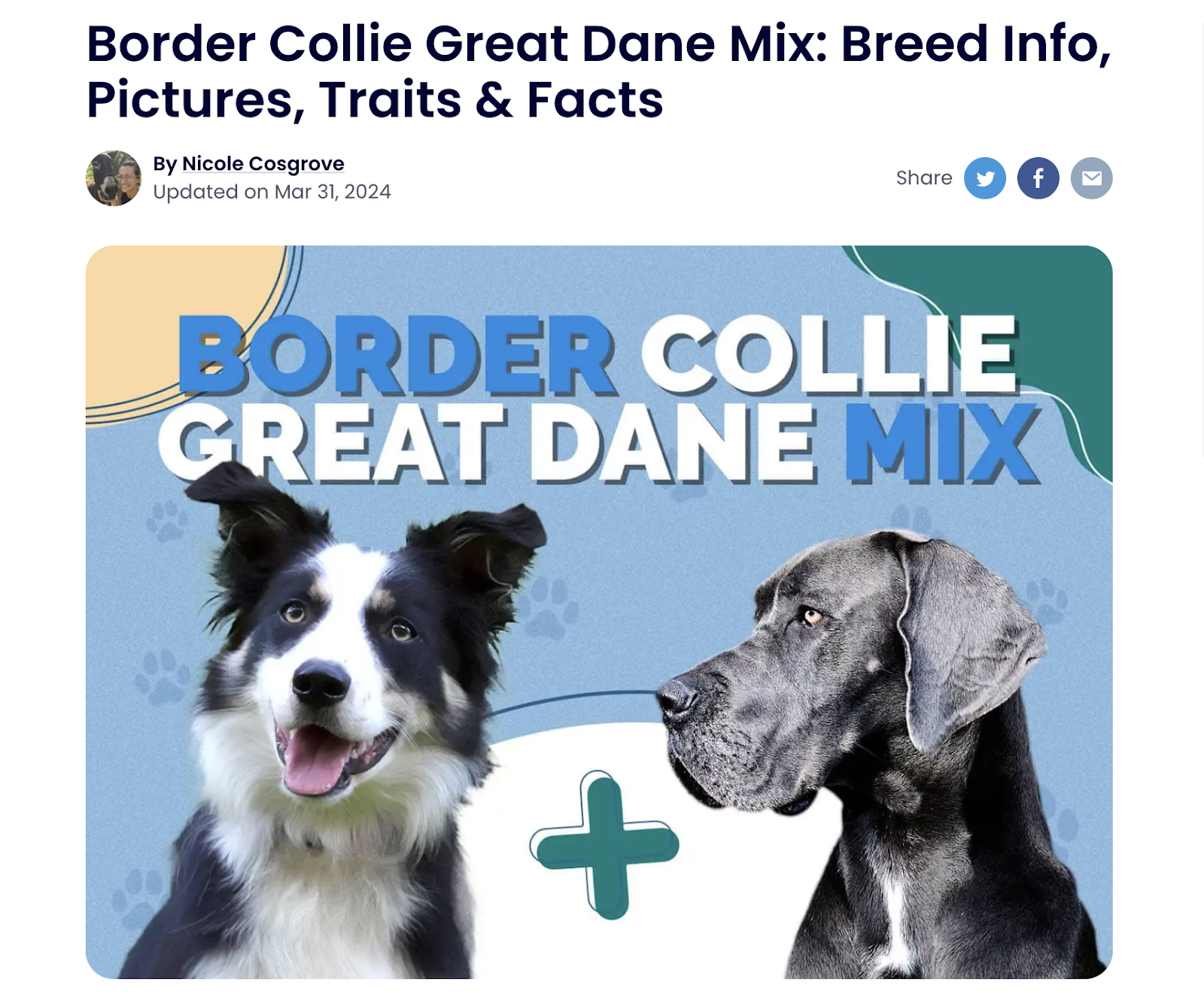
And the specified page has Google rankings for associated keywords:

SEO content helped the brand grow organic traffic by roughly 600 times over two years and increase product sales revenue by 2,964%.
By leveraging SEO content, your company could achieve similar growth.
How to Create SEO Content
Here’s how to create SEO content step by step:
1. Conduct Keyword Research
Keyword research is the process of finding what people search for in search engines to identify SEO content ideas that are relevant to your brand, popular among searchers, and that you can feasibly rank well for.
The resulting content you create around the keywords you discover can generate valuable traffic.
To get started, enter a topic relevant to your brand into Semrush's Topic Research tool.
Then, choose your target country and click "Get content ideas."
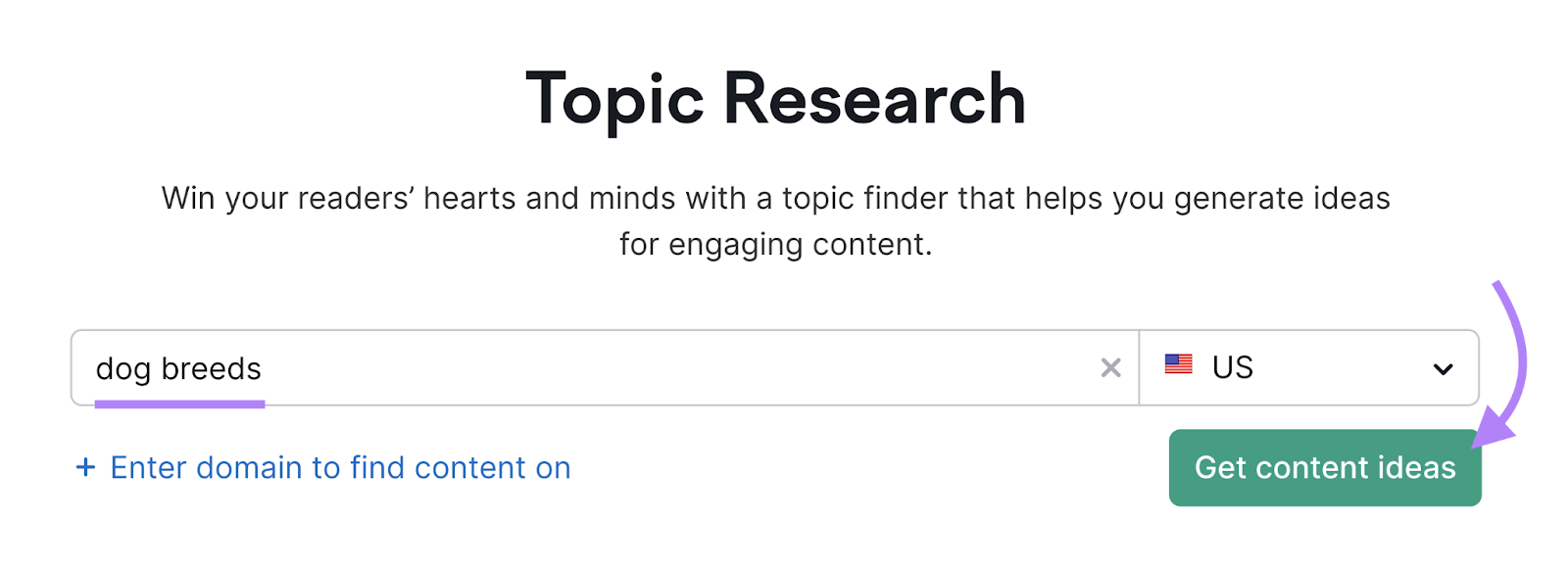
The tool will collect content ideas related to your topic.
Click "Show more" on any idea to see:
- Subtopic Volume: The average number of monthly searches for the subtopic keyword. A higher number means your SEO content's potential reach is greater.
- Difficulty: A measure of ranking difficulty expressed as a percentage. A higher score means earning a prominent ranking that gets lots of clicks will be more difficult.
- Topic Efficiency: A measure of subtopic volume relative to difficulty. A higher rating indicates a better ranking opportunity.
- Headlines: The titles of the most linked-to pages on this topic. You can click the arrow icon to visit each page and see what the content is like.
- Questions: The most-searched questions related to the topic. Answering frequently asked questions can attract and engage target audiences.
- Related Searches: Related searches that appear on Google's search results page. Reviewing similar but different searches might spark other SEO content ideas.

Here's a quick introduction to some other keyword research methods:
- Search a keyword database: Use the Keyword Magic Tool to search our database of over 25 billion keywords. You can filter for question keywords, low-difficulty keywords, etc.
- Check for keyword gaps: Use the Keyword Gap tool to identify instances when competitors rank higher than you or appear for keywords that your site doesn’t appear for
Once you've found a keyword you're interested in, analyze the search engine results page (SERP), as explained in the next section.
2. Analyze the SERP
Analyze the SERP for your chosen keyword to better understand search intent (what the user wants to achieve), confirm whether the keyword aligns with your goals, and review competitors’ content to gain inspiration for your own SEO content.
To analyze a SERP, avoid entering your keyword directly into Google, as personalized search results may not reflect what your target audience sees.
Instead, enter your target keyword and location into Keyword Overview.
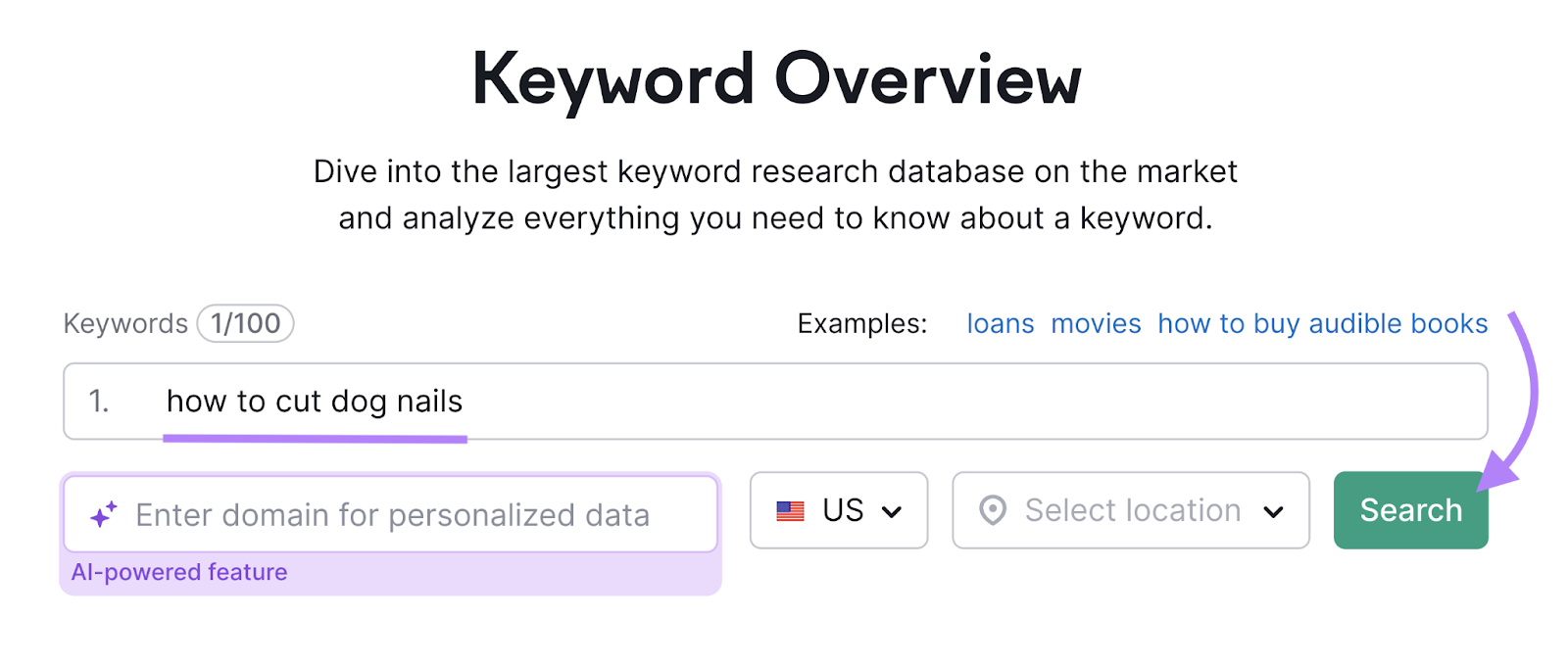
Then, scroll down to the "SERP Analysis" section to see:
- URLs that appear on Google's first page, which you can visit by clicking the icons alongside them
- Any SERP features (non-standard search results) that show, which you can visit by clicking the “View SERP” link
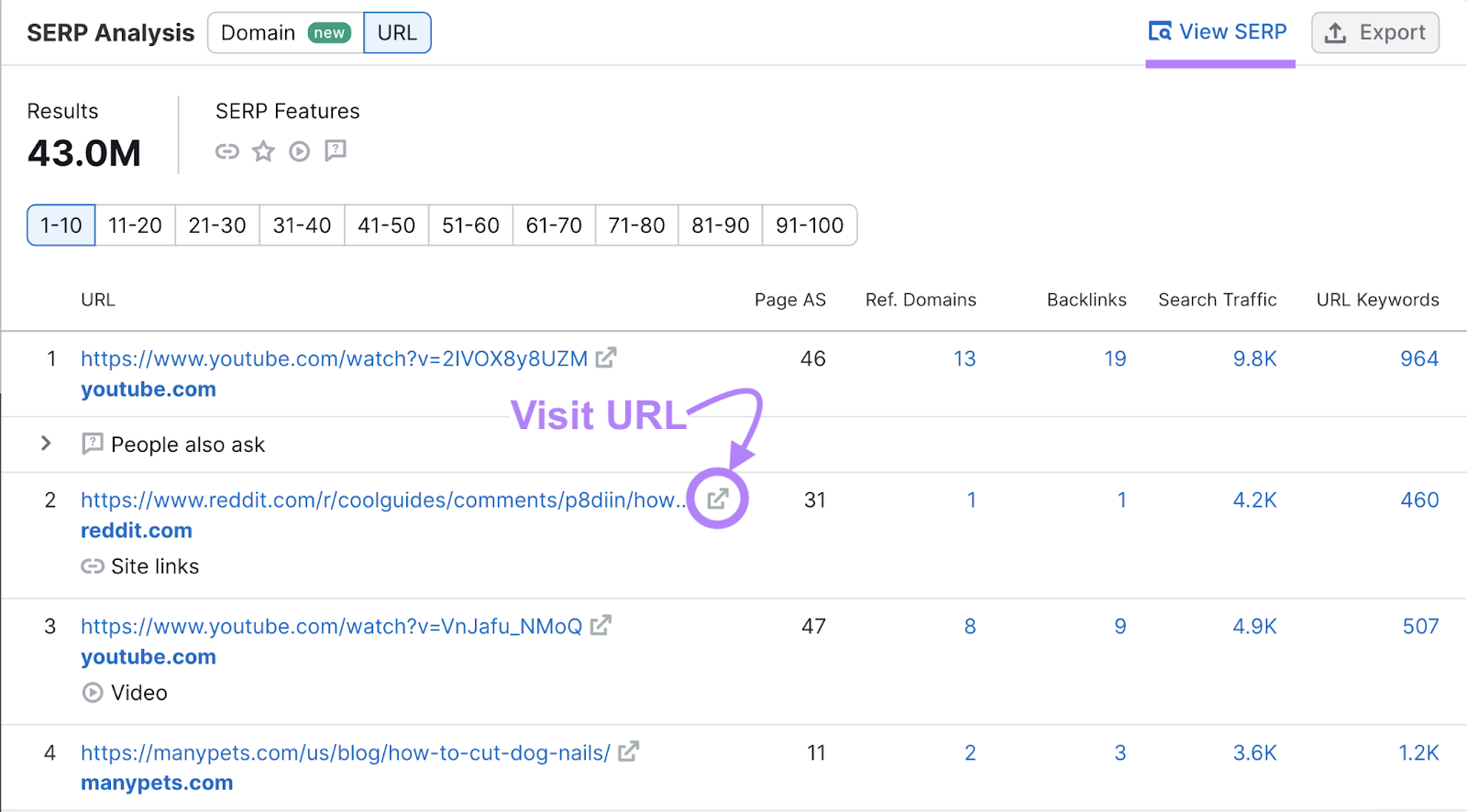
Use the information you uncover in your analysis to determine what users want to find, which is what Google wants to rank.
For example, the pictured SERP indicates that users want:
- Information on how to safely perform a task
- Advice from an expert or others in their community
- Instructions via video or text and images
If creating this content makes sense for your brand, proceed to the next step.
If not, find a keyword that's a better match.
3. Create Quality Content
Google wants to rank quality content that offers substantial and unique value to users, so decide how to satisfy search intent and do it better than your competitors.
Giving your SEO content an edge can include doing the following:
- Conducting original research, so you have unique insights to share
- Providing additional resources, such as images, videos, or templates
- Sharing personal opinions, stories, and ideas that aren't available elsewhere
- Presenting information in a more effective and user-friendly way
- Covering the topic more comprehensively
Quality content also demonstrates Experience, Expertise, Authoritativeness, and Trustworthiness (E-E-A-T), particularly when it comes to Your Money or Your Life (YMYL) topics that can affect users' well-being.
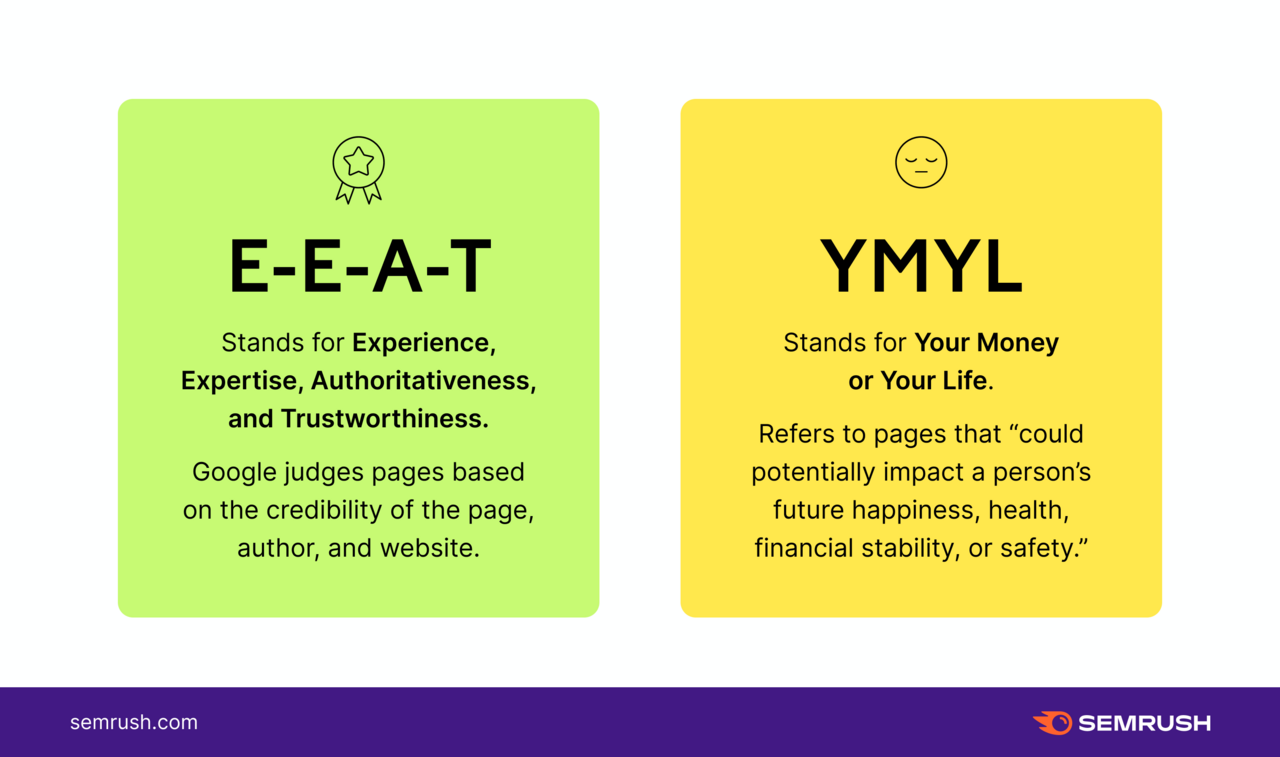
For example, the page shown below includes reliable information from qualified experts and provides it in written, image, and video formats to cater to users' various needs and preferences.
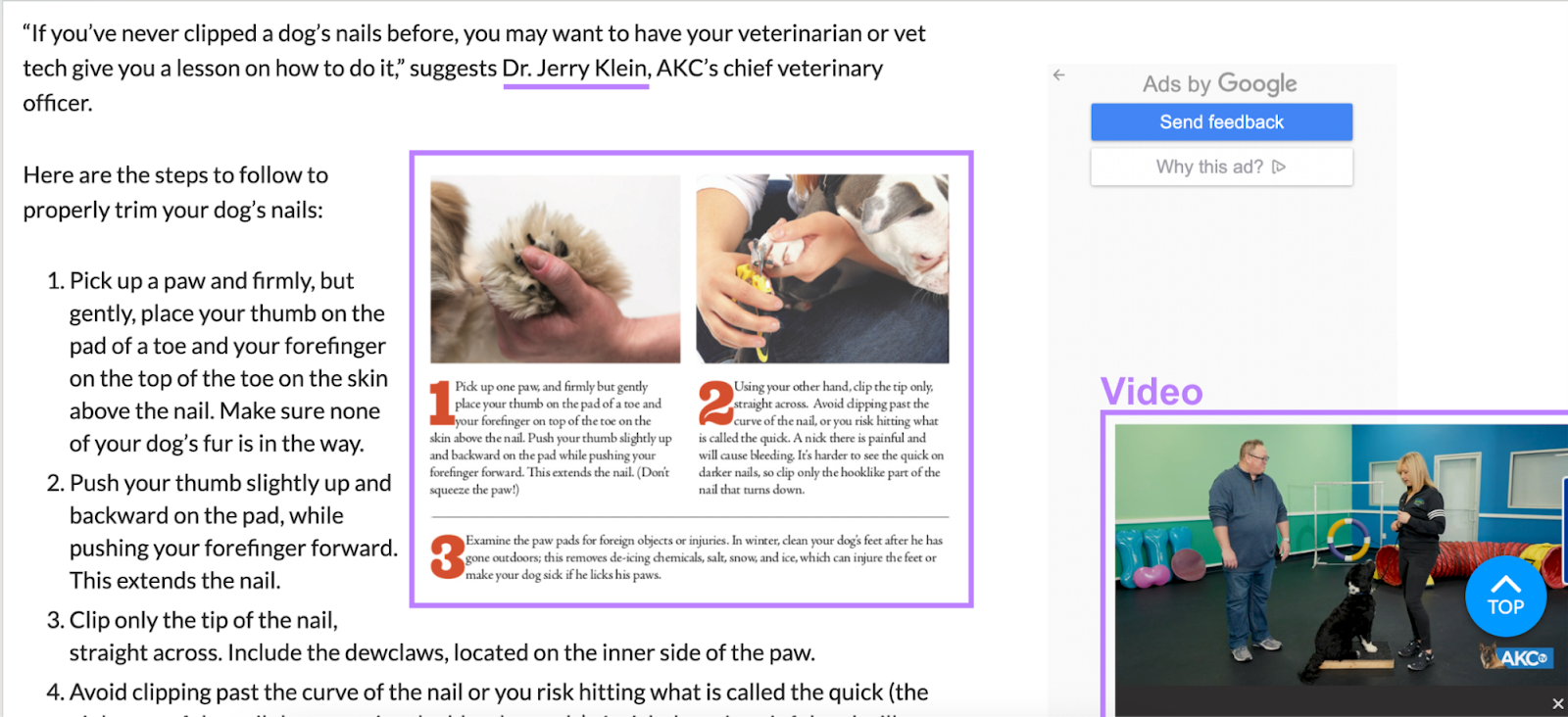
The guide also covers relevant subtopics and presents information in a user-friendly way.
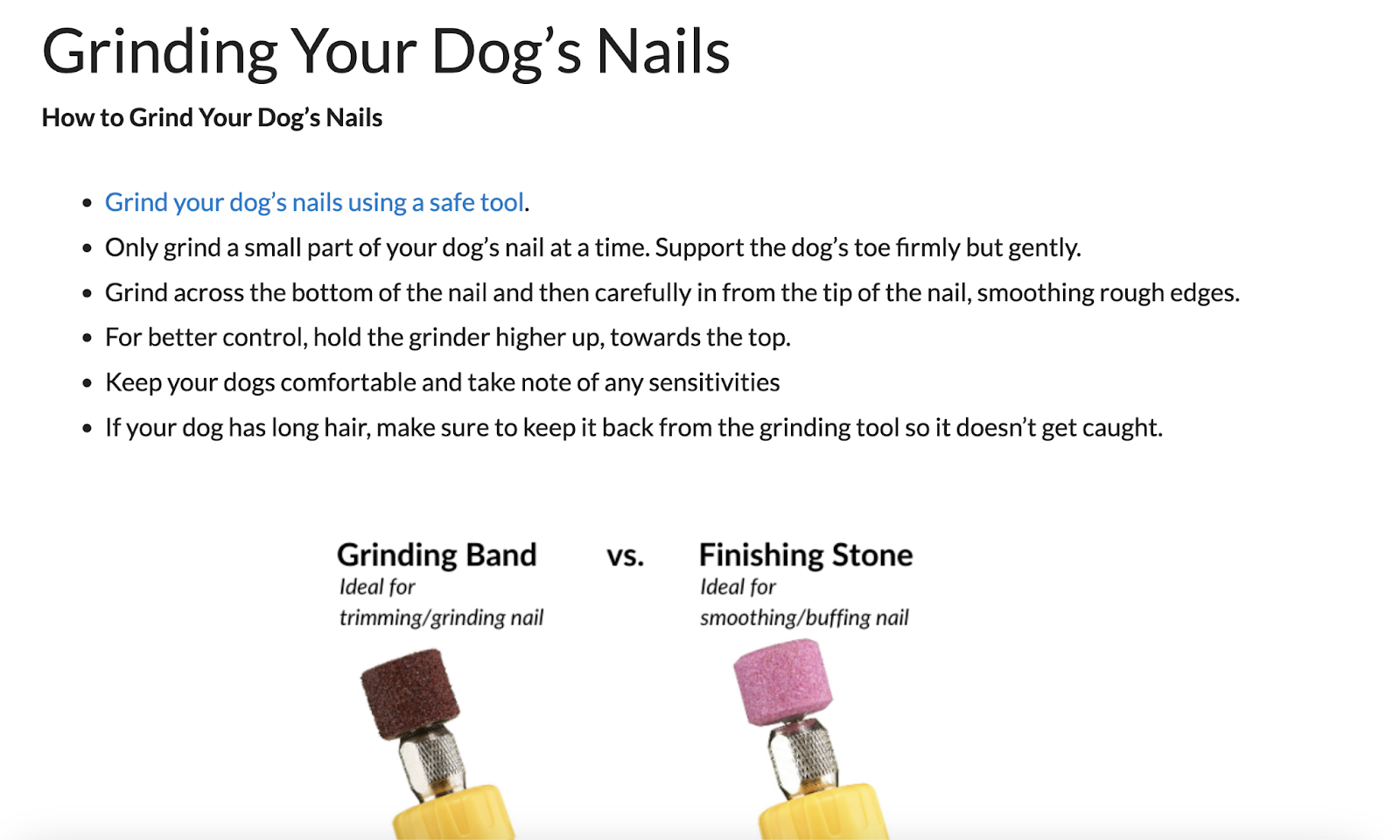
As a result, the page attracts 12.9K organic visits per month in the U.S., according to Semrush's Organic Research tool.
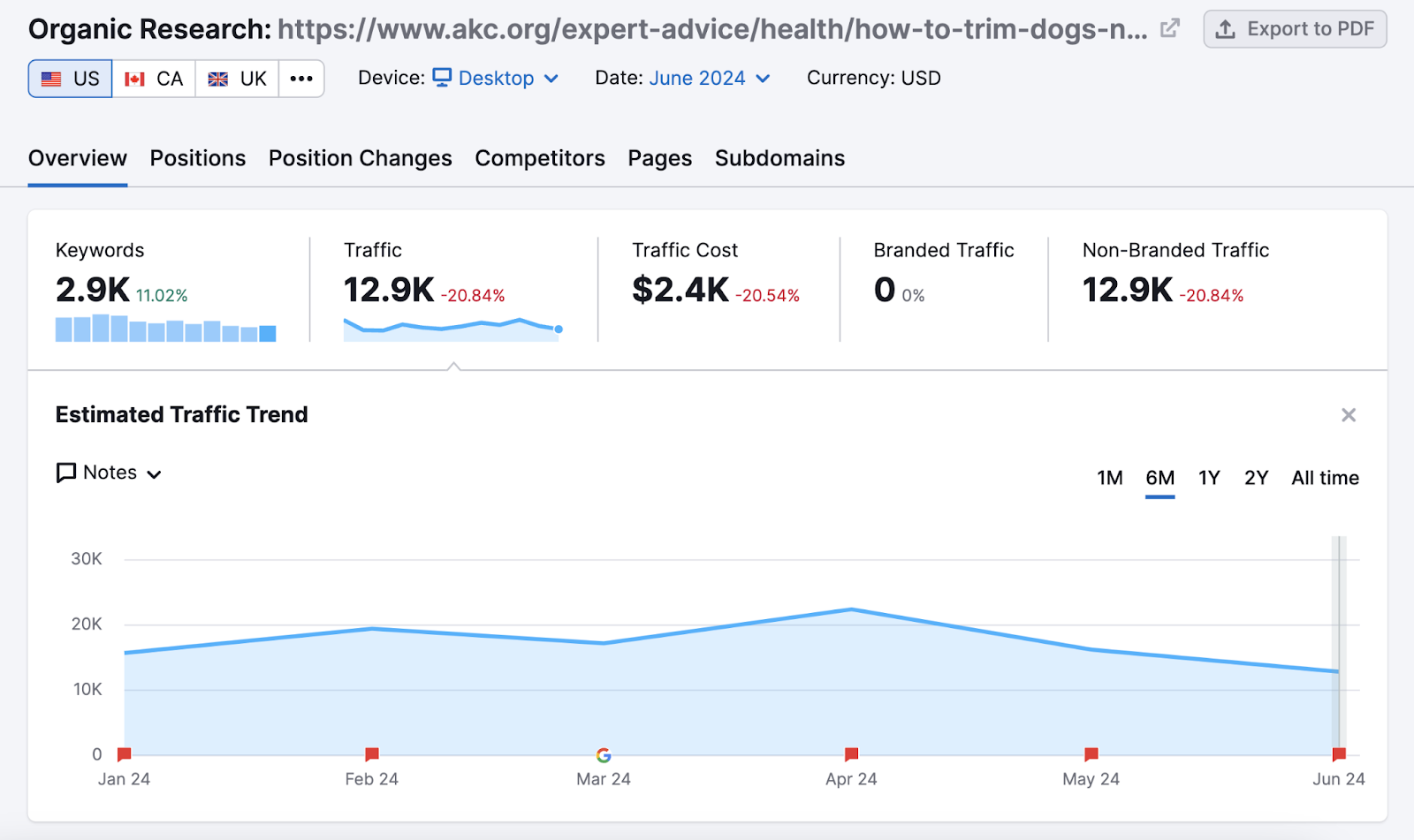
4. Use Keywords Strategically
Using keywords in your content helps Google understand that your content is relevant to those queries, making keywords an essential aspect of creating content for SEO.
However, you must be careful because Google penalizes sites that engage in keyword spam—using keywords in a way that's unnatural and unhelpful to users.
Below, we explain how to use keywords to optimize written content, images, and videos.
Written Content
Including your primary keyword in key locations is considered best practice when writing content for SEO.
Try incorporating your main keyword in these places:
- Title tag: The page title that can appear in the SERP
- Meta description: The page summary that can appear in the SERP
- H1 tag: The main heading that appears on the page
- URL slug: The unique part of the webpage address
- The first paragraph of body content (and throughout the written content, where natural)
Also, include secondary keywords (other search terms people use to find content like yours), which tend to work well within paragraphs and subheadings.
For example, the guide pictured below uses several secondary keywords.
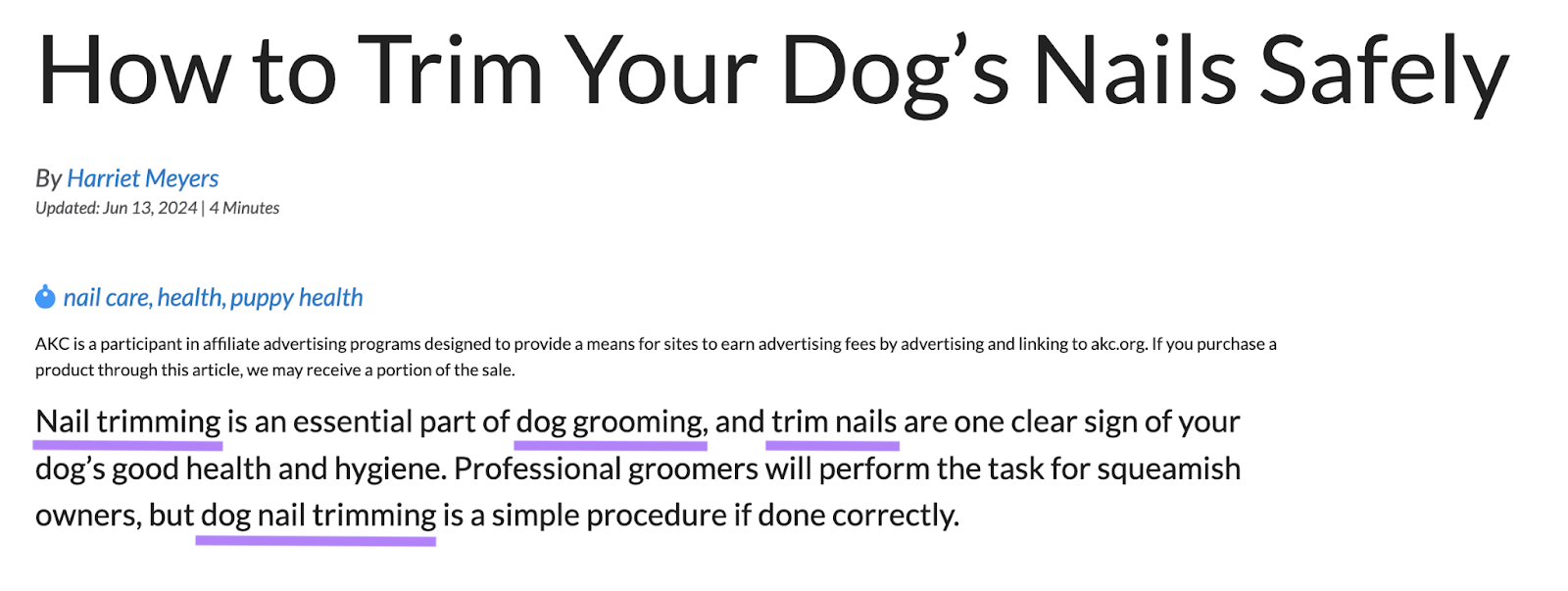
You can get help optimizing your content with Semrush's SEO Writing Assistant.
Start a new document and fill out the details in the "Set a new goal" section.
Then, click "Get recommendations."
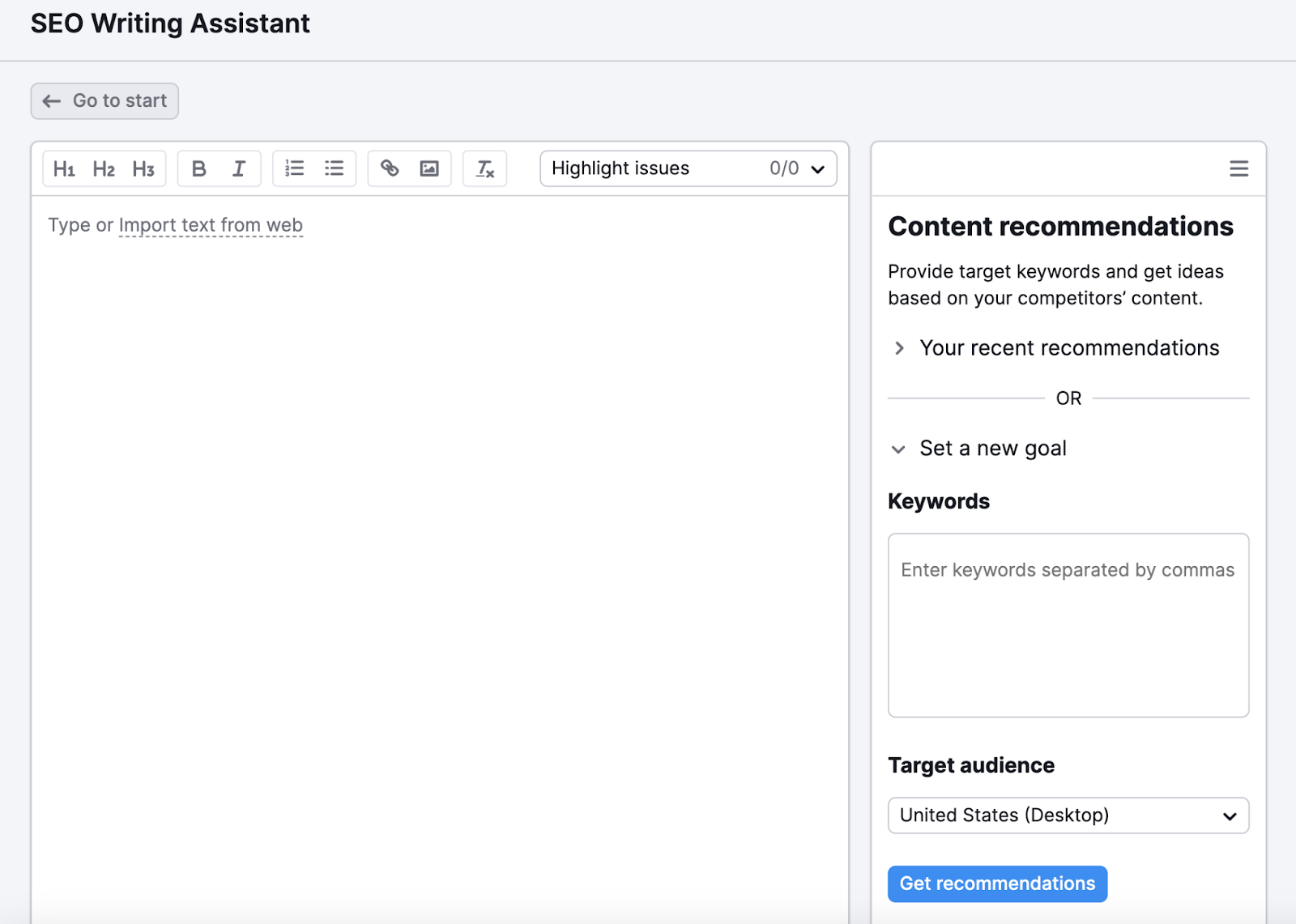
The tool will analyze top-ranking competitors to provide a variety of recommendations.
Start writing your text with these recommendations in mind.
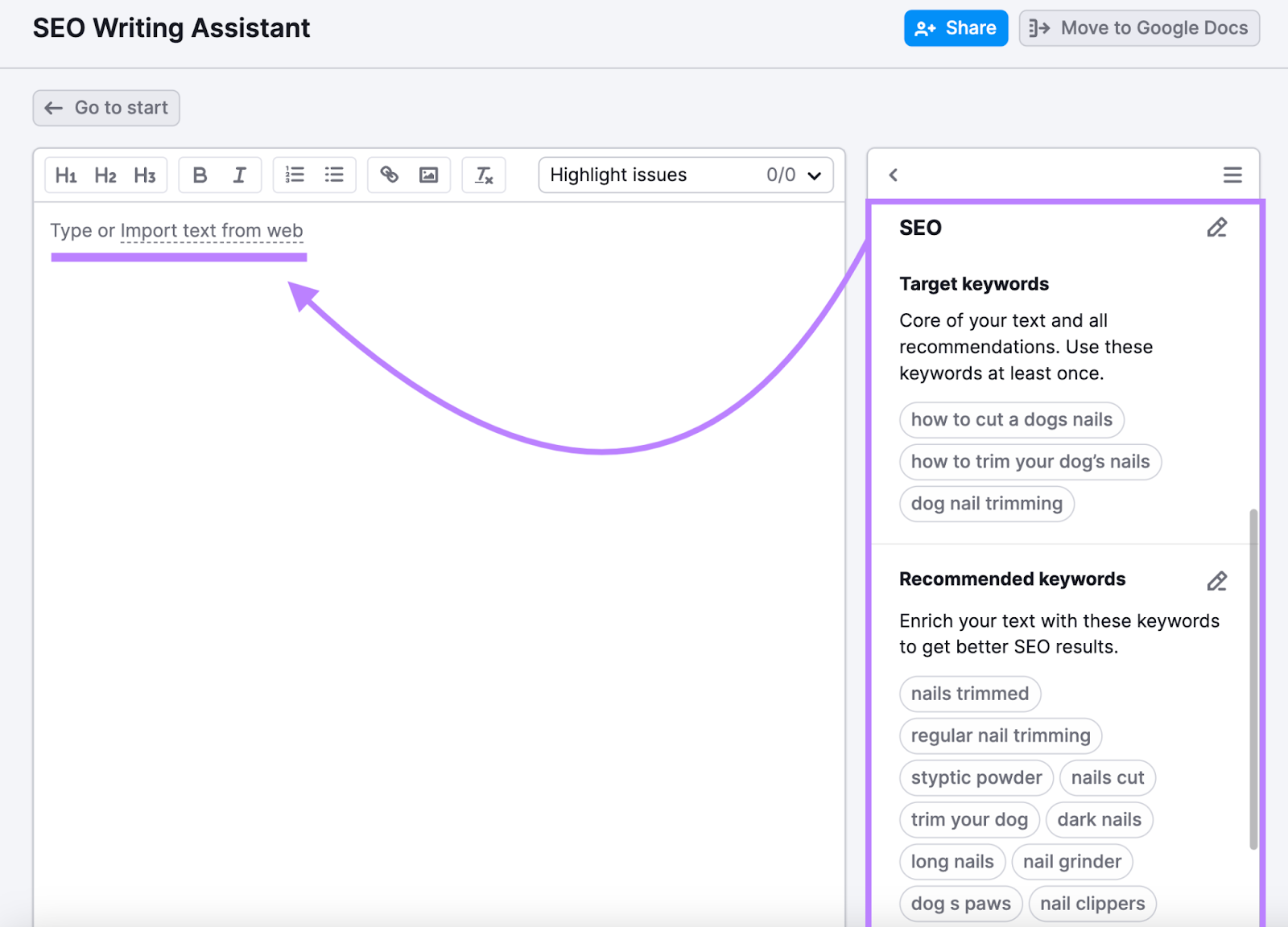
As you write, the tool will highlight any issues and score your SEO text on four criteria:
- Readability
- SEO
- Originality
- Tone of voice
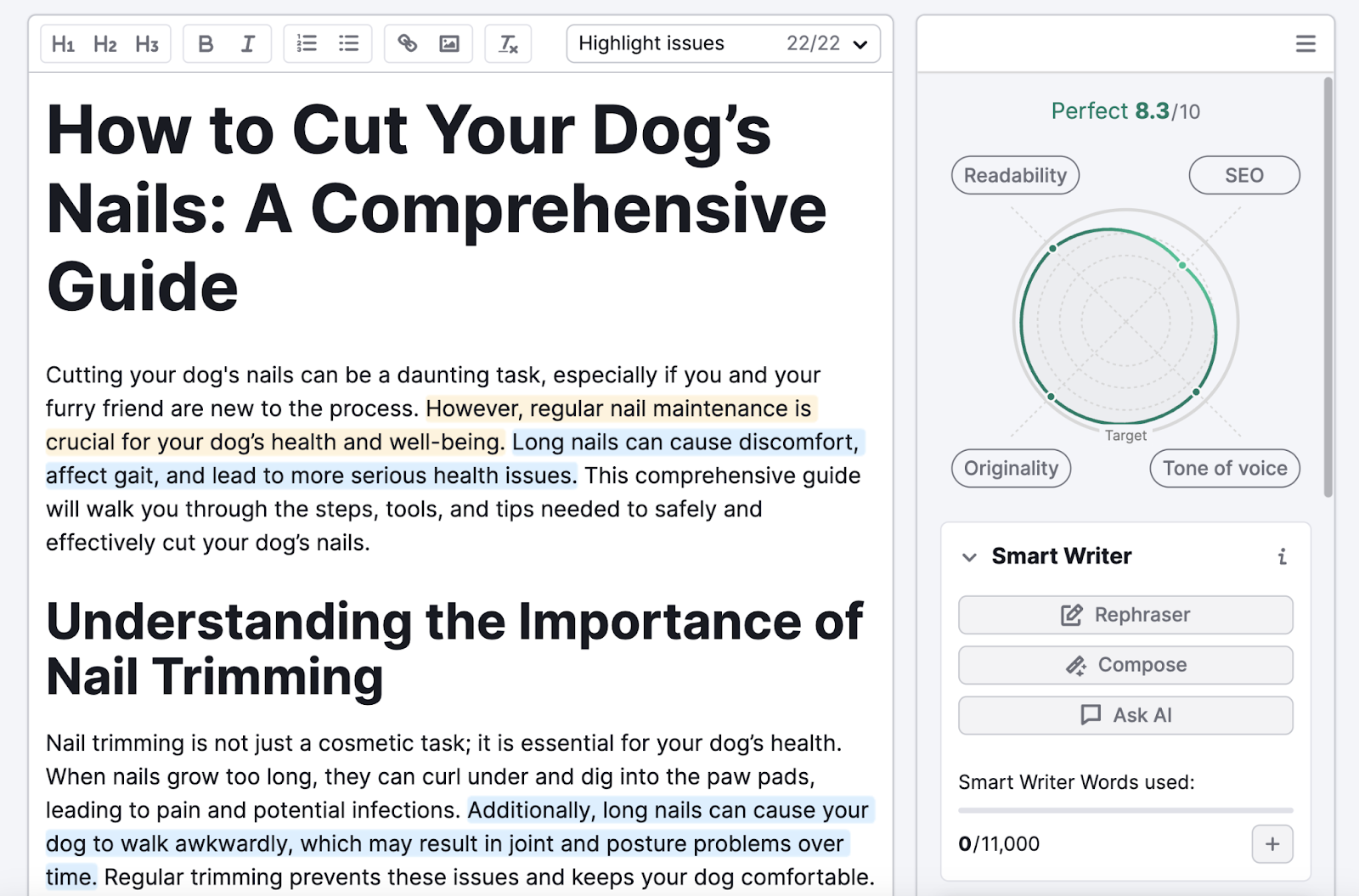
If you need help improving your score, use the AI-powered Smart Writer tools.
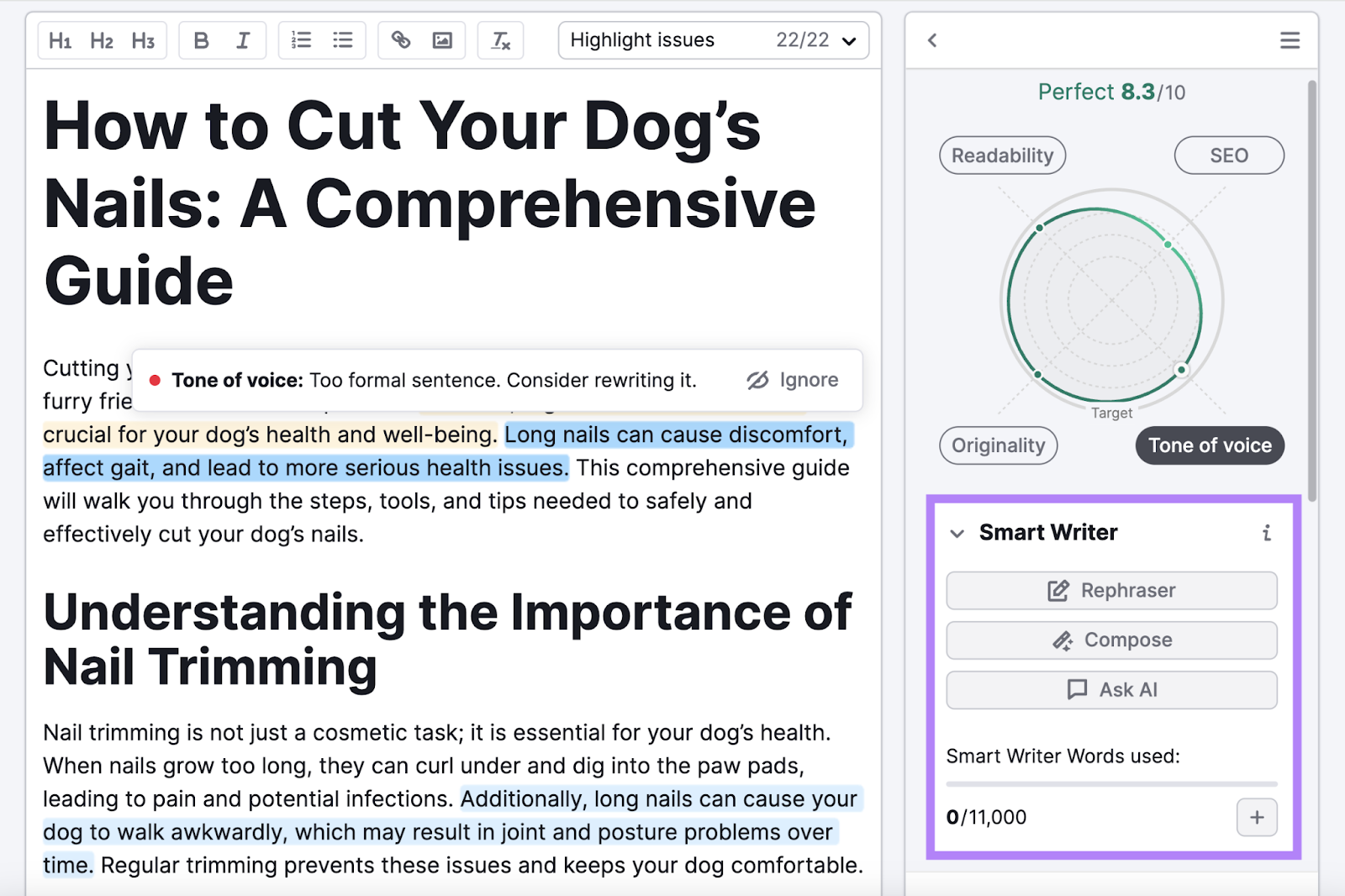
Image Content
To optimize an image for SEO, use a descriptive file name and write explanatory alt text (an image description used for accessibility and SEO purposes) when you upload it to your site.
You may also be able to write a descriptive title and description, depending on your website platform.

You can then add the image to your webpages as desired.
Video Content
To optimize a video for SEO, upload the video to YouTube (because Google owns the platform) and incorporate your target keyword into the title and description.
The below YouTube video uses keywords in both the title and description:

You can then embed your optimized videos on your webpages.
Embedding optimized videos can make it easier for users to find them and for Google to understand their purpose.
5. Apply Schema Markup
Schema markup (or structured data) is code that identifies different aspects of your SEO website content to improve Google's understanding of your content and make you eligible for rich results (search results with extra, attention-grabbing features).
For example, the schema behind one brand’s recipe looks like this:
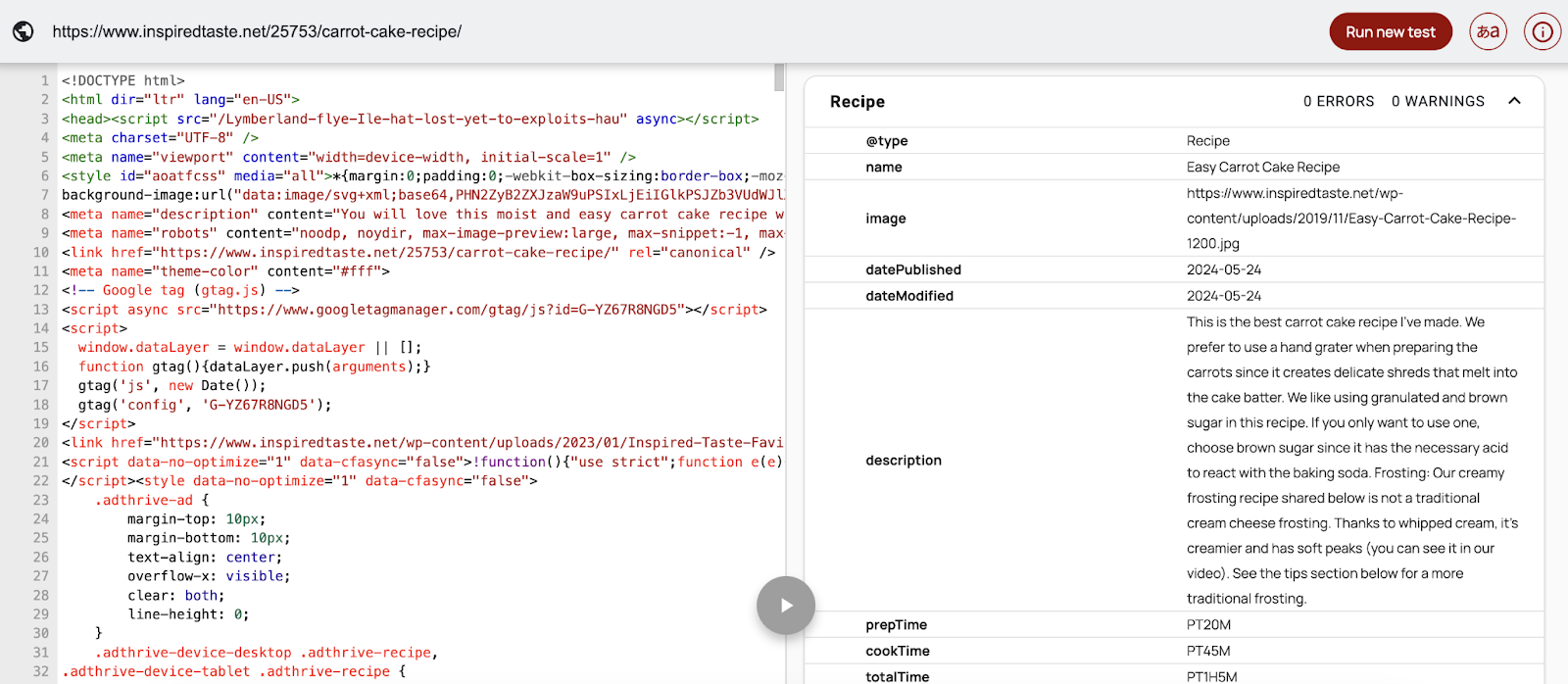
And the recipe appears on some SERPs with the corresponding information:

You may be able to find a website plugin that makes implementing schema markup easy.
Otherwise, check out the advice in Google's help guide or seek help from a web developer.
Start Creating SEO Content
Semrush has all the tools you need to find SEO content ideas and effectively execute them.
Sign up for free to try tools like:
- Topic Research, which makes finding popular keywords you can rank highly for easy
- SEO Writing Assistant, the ultimate companion for writing search-optimized content